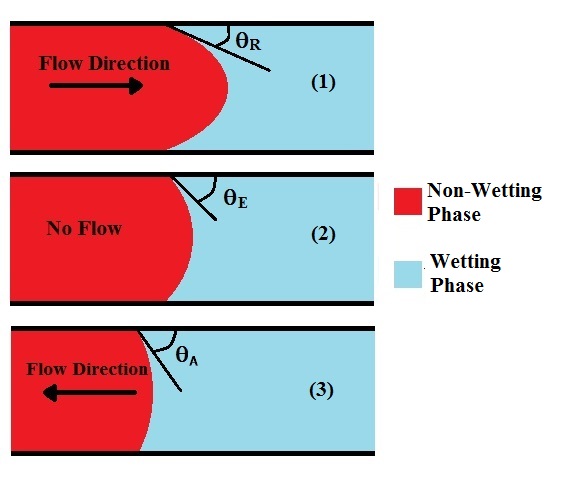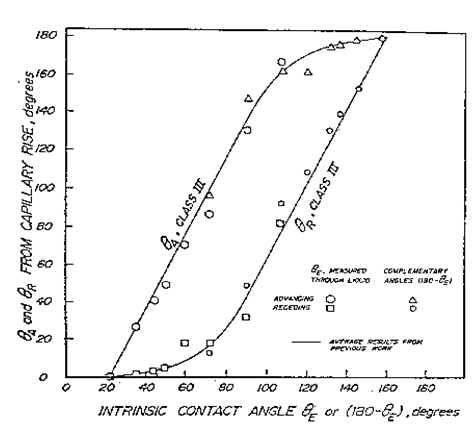Fundamentals of Fluid Flow in Porous Media
Chapter 2
Multi-phase Saturated Rock Properties:
Capillary Pressure Hysteresis: Contact Angle Hysteresis During Displacement
According to the definition ‘hysteresis’ occurs when a measured variable depends on the direction of change of an independent variable. According to eq.(2‑78) contact angle hysteresis will cause hysteresis in the capillary pressure. Consider a capillary tube containing two immiscible fluids (Figure 2‑62):
Case 1: Displacement by drainage
θR = receding contact angle (i.e. wetting phase receding)
Occurs when the non-wetting phase displaces the wetting phase by increasing Pnw.
( Pc )Drainage = ( 2σcosθR ) / r
Case 2: Equilibrium
θE = equilibrium or static contact angle
Pc = ( 2σcosθE ) / r
Case 3: Displacement by imbibition
θA = advancing contact angle (i.e. Wetting phase is advancing)
Occurs when the non-wetting phase is displaced by the wetting phase by a decrease Pnw
( Pc)Imbibition = ( 2σcosθA ) / r

Figure 2-62: Contact Angle Hysteresis during the Displacement
In general it can be stated that:

Therefore at the same saturation:

Figure 2‑63 shows dynamic contact angle behavior

Figure 2-63: Dynamic Contact Angle Behavior

Figure 2-64: Static Values of Advancing and Receding Contact Angles at Rough Surfaces versus Values at Smooth Surfaces (where θE refers to smooth surface measurements)
Questions?
If you have any questions at all, please feel free to ask PERM! We are here to help the community.
